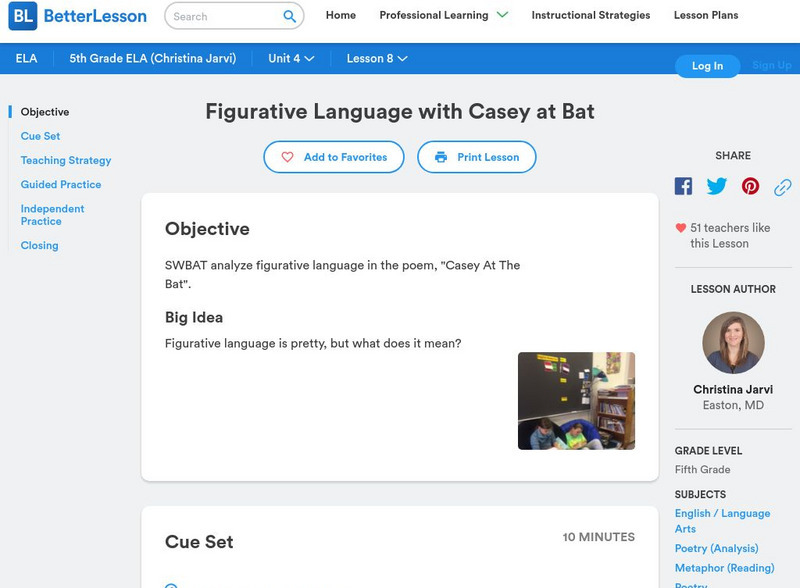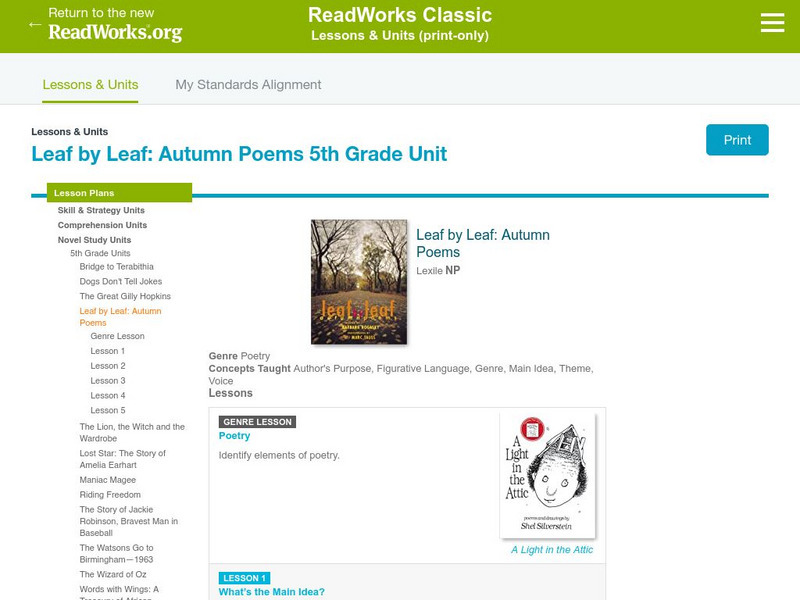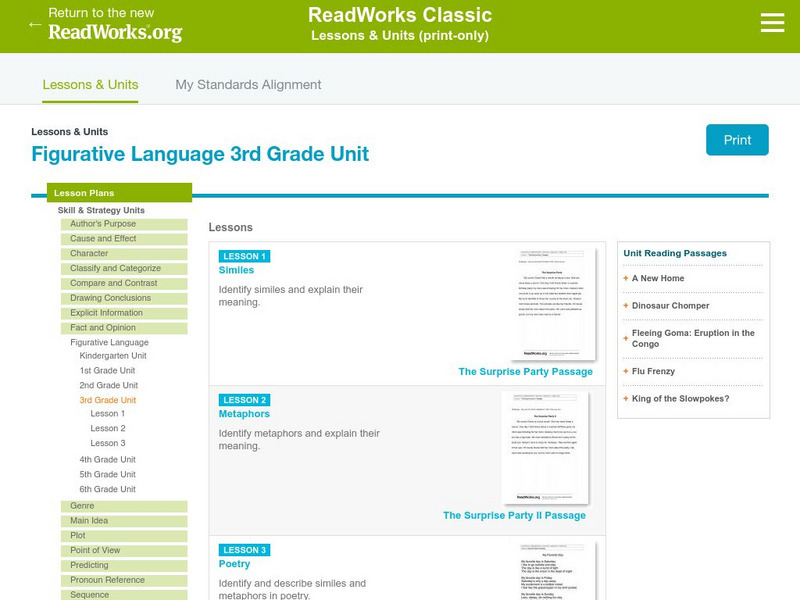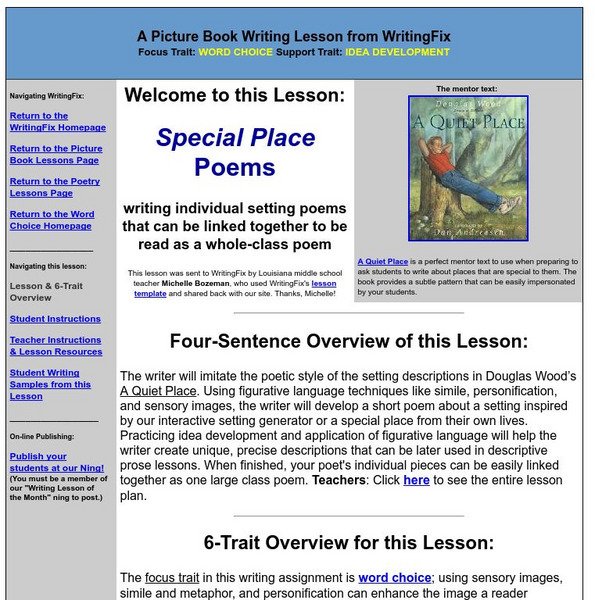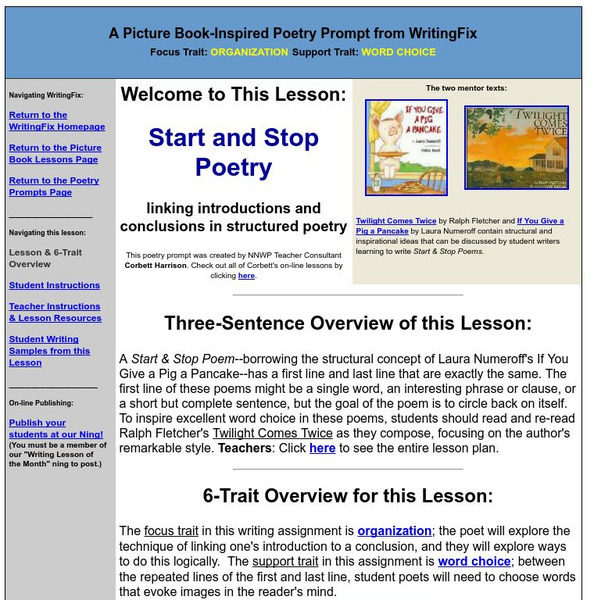Hi, what do you want to do?
Curated OER
Disease and Epidemics
Students explore how disease and epidemics have the potential to shape communities. They examine their impact on culture and specifically the literature of the time. Students investigate how trade routes accelerated the movement of...
Curated OER
Geo Jammin' - Day 4, Lesson 15: Geo Jingo Jivin'
Second graders explore how musical instruments h ave varying geometric shape, and how those geometric shapes correspond to three-dimenaional shapes that students have studied.
Curated OER
Persuasion
Young scholars explore the characteristics of a persuasive letter. They label each characteristic and they create a persuasive letter using the correct business letter format. Students recommend a school rule or change of a rule and...
Curated OER
Creative Writing Inspired by Paintings
Third graders view a PowerPoint presentation of the images by Maxfield Parrish. They wirte a short story based on one image and create drawings of an imagined character.
Curated OER
Ornithology and Real World Science
Double click that mouse because you just found an amazing lesson! This cross-curricular Ornithology lesson incorporates literature, writing, reading informational text, data collection, scientific inquiry, Internet research, art, and...
Curated OER
Wearing of the Green
Young scholars study some basic vocabulary and the names of popular symbols for this holiday with these St. Patrick's Day word puzzles.
Curated OER
A Geopoem About Alaska
Sixth graders conduct Internet research on the physical and human characteristics of Alaska. They compose and write geopoems about the state of Alaska, using a template.
Time Warp Trio
The Seven Blunders of the World
Learners explore the cultures and civilizations of Mesopotamia. They take a look at the factors that shaped the region, and study the history of the Hanging Gardens of Babylon, and other ancient wonders of the world. The class is divided...
Curated OER
Disease & Epidemics: Architects of History
Students explore disease and its relationship to history and literature. They investigate issues that range from early biological warfare and historical disease treatments, to observing today's race for the cure against current emerging...
Better Lesson
Better Lesson: Unit: Figurative Language With Casey at Bat
In this lesson, 5th graders learn how to analyze figurative language in the poem, "Casey At The Bat."
ReadWriteThink
Read Write Think: Onomatopoeia: A Figurative Language Mini Lesson
Contains plans for a minilesson that teaches about onomatopoeia using Edgar Allan Poe's poem "The Bells." In addition to objectives and standards, this instructional plan contains links to sites used in the lesson as well as assessment...
Read Works
Read Works: Fifth Grade: Five Lesson Unit: Leaf by Leaf: Autumn Poems
[Free Registration/Login Required] A five instructional activity poetry unit focusing on main idea, tone, theme, author's purpose, and figurative language in poetry. Texts must be provided by the teacher, but handouts that go along with...
Read Works
Read Works: Figurative Language 3rd Grade Unit
[Free Registration/Login Required] In this three-instructional activity unit, students use the book If You Hopped Like a Frog by David Schwartz and some additional short texts to learn to identify and understand the use of simile and...
Read Works
Read Works: 3rd Grade Lesson: Poetry
[Free Registration/Login Required] A lesson in which students use two provided poems to learn to identify and understand the use of similes and metaphors in poetry. Lesson includes direct teaching, guided practice, and independent...
National Endowment for the Humanities
Neh: Edsit Ement: Poems of Tennyson and Noyes: Pictures in Words
This is a great and informative site. This instructional activity uses Tennyson's "The Charge of the Light Brigade" and Noyes's "The Highwayman" to teach vivid imagery and figurative language. Don't miss out.
New Zealand Ministry of Education
Nz Ministry of Education: Playing Around With Poetry
Students listen to and read various texts using figurative language including a ballad, poetry (Haiku, Cinquain, Limmerick) and rap music. They discuss language, meaning and ideas in a range of texts, relating their understanding to...
Read Works
Read Works: 4th Grade Lesson: Similes and Metaphors
[Free Registration/Login Required] A lesson in which young scholars use the book Poetry for Young People: Langston Hughes edited by David Roessel and Arnold Rampersad to learn to identify and understand the use of simile and metaphor in...
Writing Fix
Writing Fix: Special Place Poems
In this lesson students will develop a poem while thinking about a special place. They will develop their ideas using strong word choice and figurative language. After the students have completed their ideas, they will be linked together...
Writing Fix
Writing Fix: Start and Stop Poetry
In this lesson students will analyze the cyclical patterns within poetry.
Love To Know Media
Your Dictionary: Literary Terms Lesson Plan
This is a lesson plan for teaching the seven literary terms used in poetry: simile, metaphor, alliteration, imagery, hyperbole, personification, and onomatopoeia.
Writing Fix
Writing Fix: Colorful Sensory Poems
This lesson allows students to explore color - both in literal and figurative terms. Students will read books about color, discuss the emotion involved with color, and incorporate color metaphors to write poems using the graphic...
Utah Education Network
Uen: Discovering Ourselves in Literature and Life
This lesson plan, provided by the International Society for Technology in Education (ISTE), encourages students to evaluate literature in a variety of multimedia formats and answer the question, "Who Am I?," Students are then asked to...
ArtsNow
Arts Now Learning: Moon Phaser [Pdf]
In this activity, 4th graders will study the moon for a period of one month and learn to identify each major moon phase. They will then describe the moon through poems, haikus, and similes.
Love To Know Media
Your Dictionary: Poetry Lesson Plans Onomatopoeia
This site offers a definition of onomatopoeia and two lesson plans with two activities each for teaching onomatopoeia to 9th graders.














